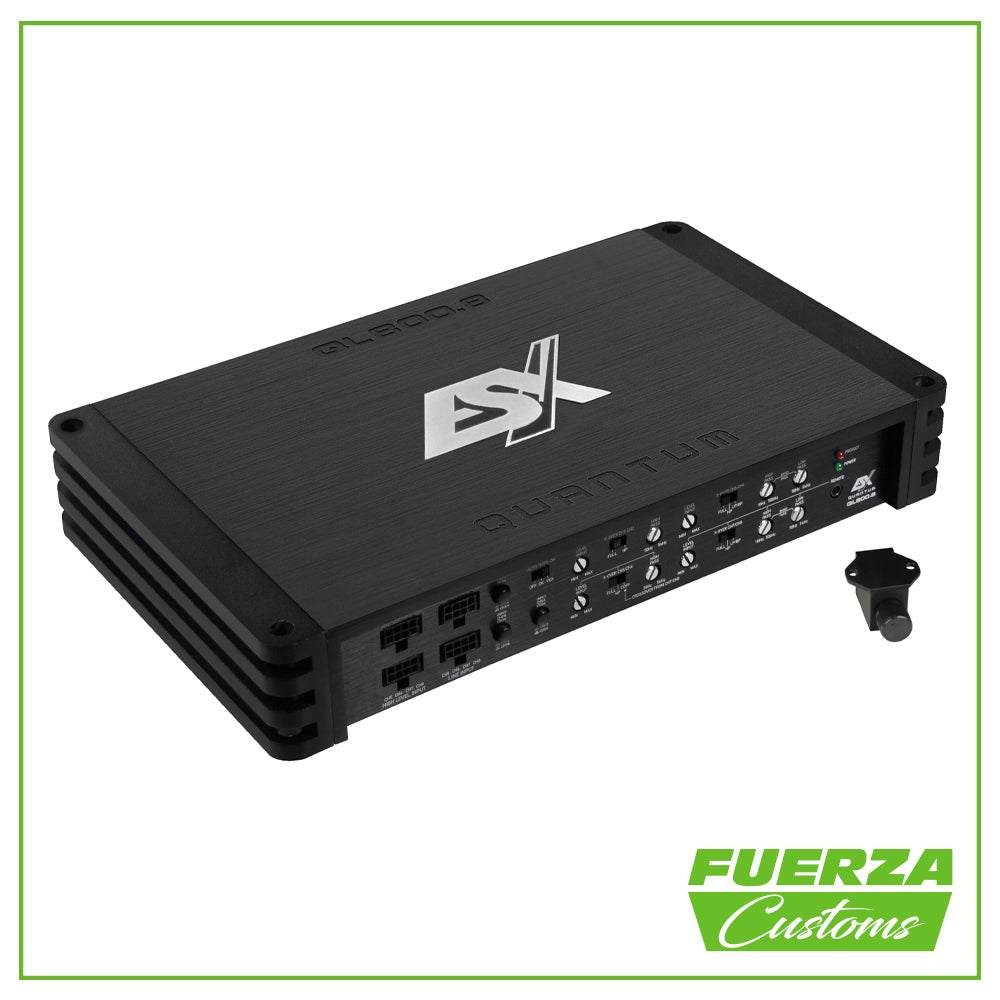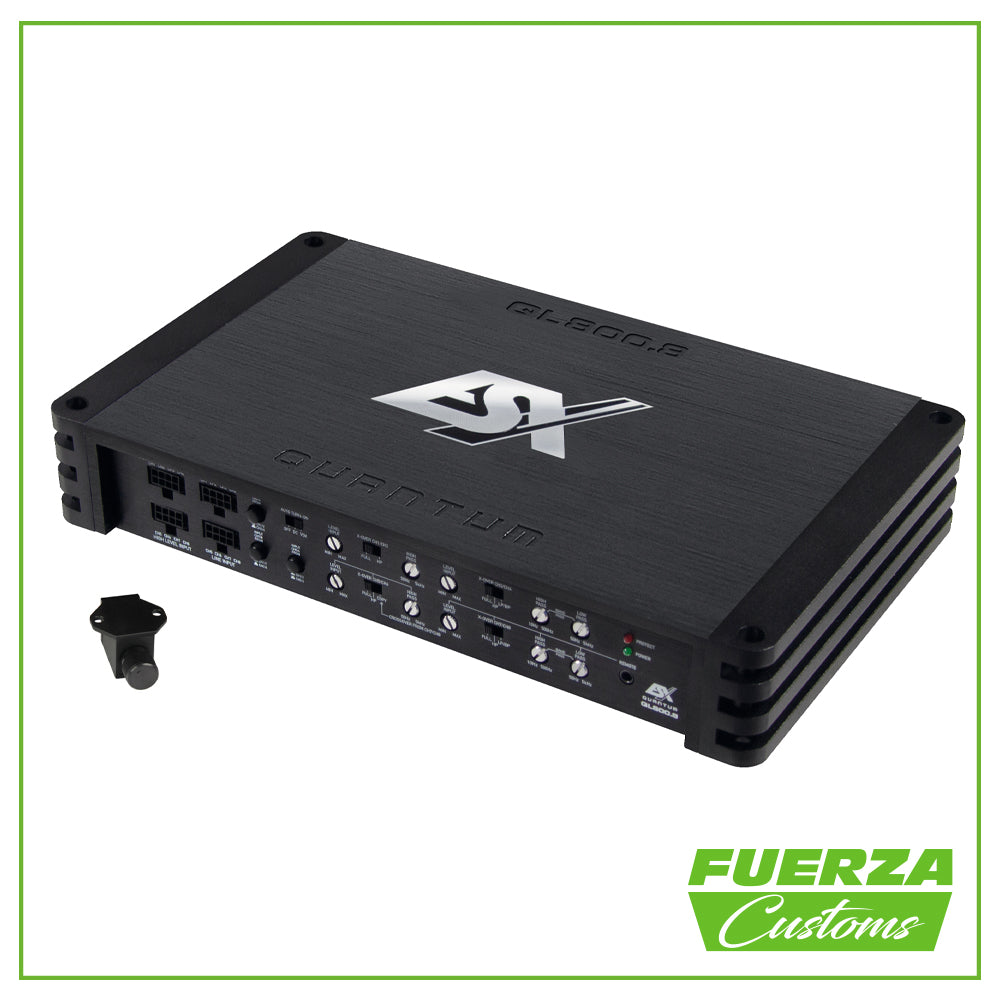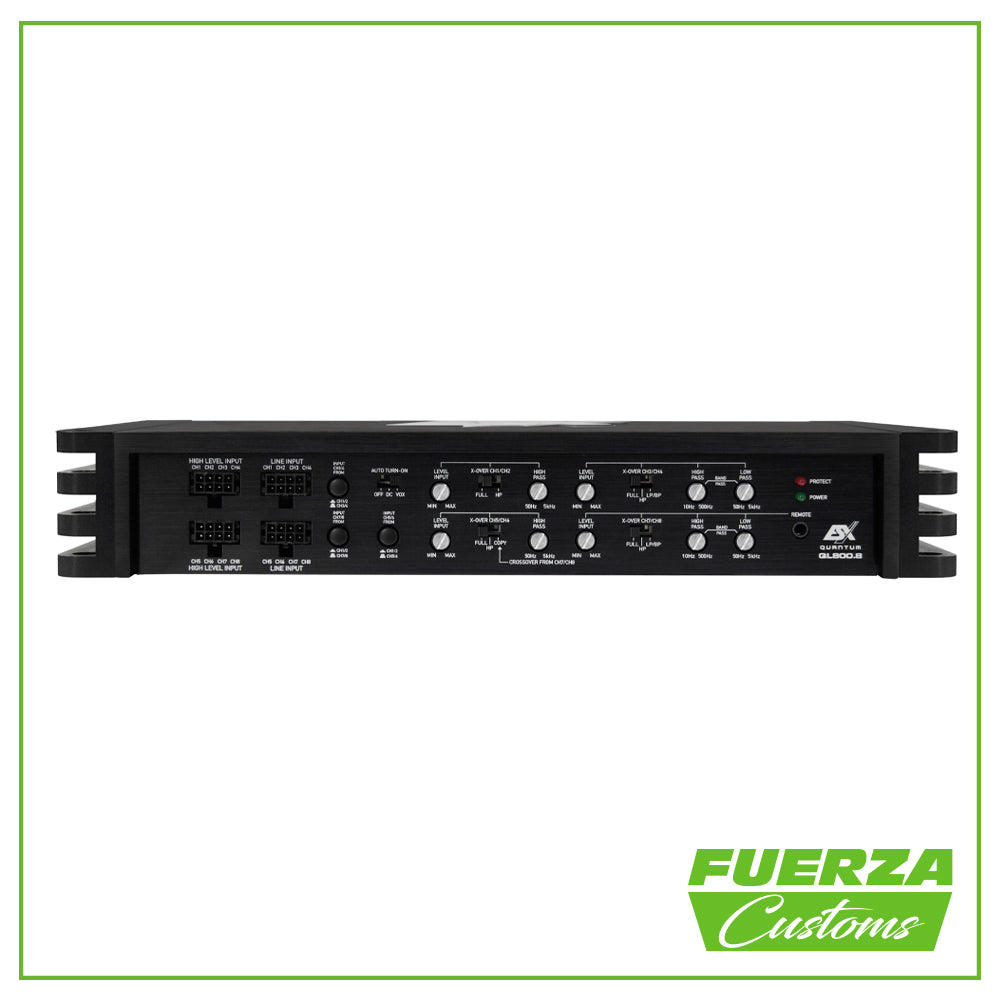




ESX QUANTUM QL800.8
Compact QUANTUM amplifiers in Class D technology have been the spearhead of the ESX range for years. The range extends from the 4 x 300 watt RMS QE1200.4, which won an EISA award, to 1 ohm stable monoblocks, to the tiny QS-TWO, which can fit anywhere. The large selection allows many possible combinations. But that's not all: ESX is now expanding the Quantum range with two more Class D multi-channel power amplifiers, which offer a whopping 6 x or 8 x 125 watts RMS at 2 ohms, top sound and the most modern features.
In this context, the new models of the QUANTUM QL series occupy a special position in the ESX range. Ideally, 6- and 8-channel amplifiers are configured so that they do not drive power-intensive 12- or 15-inch subwoofers, but rather develop their potential on 2- or 3-way systems. ESX multi-channel power amplifiers are designed to use the many channels and setting options to optimally supply tweeters, midrange speakers or woofers. In this configuration, they have significantly higher performance than might be assumed at first glance - specifically up to 160 watts RMS per channel. How is that possible? Very easy! By actively distributing the frequency ranges across multiple channels or speakers in the vehicle, all speakers never play at full power at the same time. In this case, the amplifier uses the power reserves of the generous power supply, which all channels can access if necessary. ESX calls this feature Dynamic Headroom Technology, or DHR for short.
If you decide to use, for example, four 2-channel models instead of an 8-channel amplifier, the DHR function or the dynamic performance gain would not be possible. This is because the power supply of the first amplifier is not able to also drive the channels of the second amplifier. Seen this way, 6- and 8-channel ESX amplifiers have a dynamic advantage in multi-channel applications.
If, for budget reasons, you still plan to provide a complete sound system for the vehicle, including a subwoofer, with just one Quantum power amplifier, this is also no problem thanks to the equipment and the ability to bridge all channels. It's even possible. Control the bass level via a wired bass remote. We recommend the bridge of channels 5/6 with 250 watts of mono power for the QL800.6. The QL800.8 can do even more, thanks to the copy function it can provide 2 x 250 watts RMS at 4 ohms on the bridged channels 5/6 and 7/8 including bass control. If you want even more comfort and performance, you can combine the new multi-channel amps with a monoblock QL800.1, for example, which then confidently delivers up to 800 watts RMS per ohm.
Features:
Advanced Class D Technology with very high Efficiency
Dynamic Headroom Technology*
Max. DHR Output Power per Channel up to 160 Watts RMS @ 2 Ω
Selected and audiophile tuned Components
Massive Aluminum Heatsink
Heavy lateral Die-cast Parts
High Level Inputs with Error Protection System (EPS)
Auto Turn-On Function
Start/Stop Ready
MOSFET PWM Power Supply
3-Way Protection Circuit
Compact Bass Remote Controller
Specifications:
8-Channel Class D Digital Amplifier
8 x 80/125 Watts RMS @ 4/2 Ω
4 x 250 Watts RMS @ 4 Ω bridged
HPF 50-5000 Hz (CH1/2 + CH5/6)
HPF 10-500 Hz (CH3/4 + CH7/8)
LPF 50-5000 Hz (CH3/4 + CH7/8)
Copy-Mode CH7/8 > CH5/6
RCA Inputs via Molex
RCA Outputs via Molex
Bandpass Function (CH3/4 + CH7/8)
Input Selector CH2/4/6/8
Dimensions 285 x 47 x 170 mm
Efficiency up to 87%
* Dynamic Headroom
ESX multi-channel amplifiers use innovative “Dynamic Headroom” (DHR) technology to achieve higher maximum RMS output power in typical multi-channel applications. This technology shows its strengths above all when not all channels require full power over the entire frequency spectrum at the same time. More information in the Owner's Manual.
Geen video
While there isn't a law requiring ecommerce stores to have a Return Policy, you may need one if you wish to enforce your terms and parameters of returns and refunds.
For example, in the state of New York, if a retailer does not provide a Return & Refund Policy, the retailer will be required to accept returns and give refunds for all merchandise returned within 30 days of purchase. If you wish to limit this in any way, you will need to create and post a Return Policy with your own custom terms.
Another reason for having a Return Policy even if not required by law is that most consumers prefer to shop at retailers with a clearly-posted Return Policy. This is especially important when shopping online, as more issues are likely when purchasing something without being able to see it in person first.
If you don't have a Return Policy, you may be at the mercy of state laws regulating return and refund timeframes. You may also lose potential customers who are concerned about not being able to return a product if they need or want to.
